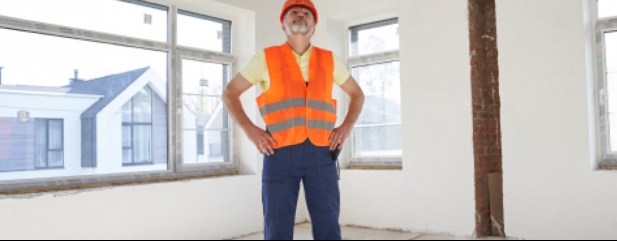Archived article
Please note that tax, investment, pension and ISA rules can change and the information and any views contained in this article may now be inaccurate.
Don't be tempted to buy the housebuilders on weakness

Investors for whom the housebuilders were a low-risk place to put their money up to and even after the pandemic have had a rude awakening in the last month or so.
While most firms had already put money aside for fire safety work, the government’s warning they were liable for up to £4 billion of additional costs to remove cladding from high-rise buildings completely blind-sided them.
The fact that weeks after the initial sell-off their share prices are still going down suggests investors are leaving the sector in their droves, but are they right to walk away or is it time to be brave and look through the gloom?
The housing market is inextricably linked to consumer confidence, which has taken a hit both from the market sell-off and the rising cost of living.
Bumper cash returns, which were a major reason for owning the shares, may no longer be possible, and provisions for fire safety works look meagre in comparison with official estimates.
The Government made it very clear that if firms didn’t agree to a ‘financial contributions scheme’ to fund its new plan by the end of March it would impose a solution in law. We would let the situation play out before thinking about getting back in.
NASTY SURPRISE
Having already brought in a ‘cladding tax’ in the autumn Budget of 4% on all profits above £25 million, in the second week of January the Government told the developers they had to find another £4 billion to fix ‘the cladding crisis they caused’.
By the end of that week, the six biggest UK housebuilders – Barratt Developments (BDEV), Bellway (BWY), Berkeley Group (BKY), Persimmon (PSN), Redrow (RDW) and Taylor Wimpey (TW.) – had lost a combined £2.9 billion in market value.
Building materials group Kingspan (KGP), some of whose products were used on the affected buildings, fared even worse losing almost €1.8bn in market cap over the course of the week.
Four weeks on from the announcement, the big six are showing a loss of more than £5 billion in value with Barratts and Persimmon each fielding losses of more than £1.25 billion, while Kingspan’s loss has swelled to €3.4 billion.
COSTS VERSUS CASH RETURNS
Although the firms have already put money aside for remediation works on building 18 metres tall or more, the government has moved the goalposts by including high-rise buildings between 11 metres and 18 metres in height.
In its results for the year to last June, Barratt Developments reported it had incurred charges of £184.2 million for remedial work leaving it with outstanding provisions of £67.6 million.
The firm said the charges reflected its ‘best estimate of the extent and future costs of work required’ but admitted it could update its estimates ‘if government legislation and regulation further evolves’.
For its part, Taylor Wimpey announced in its full year results last March it had taken total provisions of £165 million for fire safety work, and in its trading update last month it also said it believed the amount put aside was ‘a reasonable estimate’ of its liabilities.
Meanwhile, both firms have returned hundreds of millions of pounds of excess cash to investors. Taylor Wimpey said last month it was still ‘committed to such returns’, most likely by way of a share buyback, but added that the method of return would be decided ‘in light of prevailing circumstances’ when it reports its full year earnings next month.
Considering the official estimate of an extra £4 billion of costs, we have to ask whether cash returns are politically acceptable or even feasible given the current level of provisions across the sector.
VALUE VERSUS RISK
At the end of 2021 analysts were generally bullish on the housebuilders. The consensus view was that strong wage growth would trump cost of living expenses and higher mortgage rates, spurring demand for new houses. For the developers, price increases were expected to more than offset rising wage and material costs.
‘The combination of a bright outlook and a lowly sector valuation should drive very good share price performance in 2022’ was Liberum’s verdict.
This was before the collapse in valuations last month, so in theory the housebuilders should look even more attractive after their share prices have fallen 12% on average.
Fast forward, however, and the ‘cost of living crisis’ is front and centre with the energy price cap being lifted in April and borrowers hit this month with the first back-to-back rise in interest rates since 2004.
Just as concerning, more than one Bank of England governor voted to raise rates by 0.5% or 0.75% rather than 0.25%, so traders now expect rates to hit 1% by May, much earlier than previously expected.
If rates rise faster and by more than expected at the same time that household bills are going through the roof there is a real risk of consumer confidence, which is pivotal to the housing market, tanking. In other words, a call on the housebuilders is about more than valuation.
STILL A LACK OF SUPPLY
It’s widely accepted that the driving factor in the residential market is a structural lack of housing, or more accurately a lack of affordable modern homes designed for the way we live.
The UK has a huge stock of small, old-fashioned, terraced houses, which were perfectly adequate for most of the 20th Century but don’t suit the lives we lead – or would like to lead – today.
The government has an annual target of 300,000 new homes, but in the year to March 2020 completions fell to 220,000 and by June of the same year they had only risen to 250,000.
While supply remains short, the pandemic and the need to be able to work from home have fuelled an even greater desire for more flexible living and more space in general.
In addition, Help to Buy and the temporary stamp duty holiday have helped drive average prices for existing houses to record levels in many parts of the UK and allowed developers to increase the price of new homes by double digits each year.
A LESS BUOYANT MARKET?
According to a survey compiled by Liberum, the total number of housing transactions last year rose more than 40% to 1.47 million thanks to the combination of government incentives and the ‘race for space’.
However, the same survey sees transaction volumes normalizing at 1.23 million this year and next year, slightly above 2019 levels but significantly below last year.
While we don’t believe the housing market is in a ‘bubble’, last year’s 10% rise in prices was clearly abnormal. Given the looming squeeze on consumer incomes, we doubt prices will rise anything like as fast this year.
Naturally enough the housebuilders plan to increase sales this year, but in a market with fewer transactions and fewer incentives, and against a backdrop of fragile consumer confidence, we wonder whether they might have to start thinking the unthinkable, in other words competing on price.
BUY OR BYE?
We can’t rule out a tradeable rally in the housebuilding sector at some point, but equally we can’t predict when it will happen or how long it will last. For those who enjoy the excitement of trying to make a quick 5%, 10% or 15% turn, we wish them luck.
For long-term investors, though, we feel the risks associated with owning shares in the developers outweigh the rewards for now.
Important information:
These articles are provided by Shares magazine which is published by AJ Bell Media, a part of AJ Bell. Shares is not written by AJ Bell.
Shares is provided for your general information and use and is not a personal recommendation to invest. It is not intended to be relied upon by you in making or not making any investment decisions. The investments referred to in these articles will not be suitable for all investors. If in doubt please seek appropriate independent financial advice.
Investors acting on the information in these articles do so at their own risk and AJ Bell Media and its staff do not accept liability for losses suffered by investors as a result of their investment decisions.
Issue contents
Editor's View
Feature
Great Ideas
- Google-owner does the splits as it smashes Q4 expectations
- Grab a great buying opportunity in Gamma Communications
- Pets At Home's new CEO is a great hire and the shares are still a buy
- Our buy call on Shell is up nearly 20% in two weeks
- Take advantage of Smithson’s stumble and top up
- Virgin Wines’ share price slump looks overdone
- This value-tilted global fund is now outperforming

 magazine
magazine










